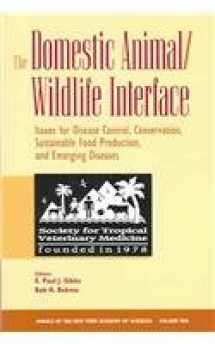
The Domestic Animal/Wildlife Interface: Issues for Disease Control, Conservation, Sustainable Food Production, and Emerging Diseases
Book details
Summary
Description
During the last century, the conservation of wildlife and the need to increase the production of animal agriculture, particularly in developing countries, have been in conflict at times, yet both have clear financial, biological, social, and even spiritual value for society. This volume addresses the problems of disease in both wildlife and domestic animals and the transmission of disease between the two populations. It examines ways in which we can conserve and manage animals in both sectors for optimal health and production, while preserving ecological communities. Diseases as diverse as tuberculosis, foot and mouth, and rinderpest are discussed. Global disease surveillance, the transmission of diseases between animals and people, and human dependence on healthy livestock and wildlife are also emphasized.
Table of Contents:Part I. The Importance of Disease in Wildlife and Domestic Livestock and the Relationship to Issues of Conservation and SustainabilityPart II. Approaches to Disease Control. A. Diagnostics: VirusesPart II. Approaches to Disease Control. A. Diagnostics: BacteriaPart II. Approaches to Disease Control. A. Diagnostics: ProtozoaPart II. Approaches to Disease Control. B. Vaccines, Immunology, and Genomics: VirusesPart II. Approaches to Disease Control. B. Vaccines, Immunology, and Genomics: BacteriaPart II. Approaches to Disease Control. B. Vaccines, Immunology, and Genomics: ProtozoaPart II. Approaches to Disease Control. B. Vaccines, Immunology, and Genomics: ArthropodsPart II. Approaches to Disease Control. C. Epidemiology, Surveillance, and Disease Management: VirusesPart II. Approaches to Disease Control. C. Epidemiology, Surveillance, and Disease Management: BacteriaPart II. Approaches to Disease Control. C. Epidemiology, Surveillance, and Disease Management: ProtozoaPart II. Approaches to Disease Control. C. Epidemiology, Surveillance, and Disease Management: Arthropod VectorsPart III. General


We would LOVE it if you could help us and other readers by reviewing the book
Book review



